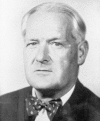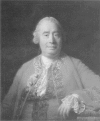Hume, Mill, Hill, and the sui generis epidemiologic approach to causal inference
- PMID: 24071010
- PMCID: PMC3888277
- DOI: 10.1093/aje/kwt223
Hume, Mill, Hill, and the sui generis epidemiologic approach to causal inference
Abstract
The epidemiologic approach to causal inference (i.e., Hill's viewpoints) consists of evaluating potential causes from the following 2, noncumulative angles: 1) established results from comparative, observational, or experimental epidemiologic studies; and 2) reviews of nonepidemiologic evidence. It does not involve statements of statistical significance. The philosophical roots of Hill's viewpoints are unknown. Superficially, they seem to descend from the ideas of Hume and Mill. Hill's viewpoints, however, use a different kind of evidence and have different purposes than do Hume's rules or Mill's system of logic. In a nutshell, Hume ignores comparative evidence central to Hill's viewpoints. Mill's logic disqualifies as invalid nonexperimental evidence, which forms the bulk of epidemiologic findings reviewed from Hill's viewpoints. The approaches by Hume and Mill cannot corroborate successful implementations of Hill's viewpoints. Besides Hume and Mill, the epidemiologic literature is clueless about a plausible, pre-1965 philosophical origin of Hill's viewpoints. Thus, Hill's viewpoints may be philosophically novel, sui generis, still waiting to be validated and justified.
Keywords: David Hume; John Stuart Mill; causality; evidence; inference; lung cancer; philosophy; tobacco.
Figures



Similar articles
-
On the origin of Hill's causal criteria.Epidemiology. 1991 Sep;2(5):367-9. doi: 10.1097/00001648-199109000-00010. Epidemiology. 1991. PMID: 1742387
-
Analogy in causal inference: rethinking Austin Bradford Hill's neglected consideration.Ann Epidemiol. 2018 May;28(5):343-346. doi: 10.1016/j.annepidem.2018.03.004. Epub 2018 Mar 12. Ann Epidemiol. 2018. PMID: 29609873
-
Epidemiological causality.Hist Philos Life Sci. 2005;27(3-4):365-79. Hist Philos Life Sci. 2005. PMID: 16898206
-
A quantitative weight of evidence assessment of Hill's guidelines for causal inference for cosmetic talc as a cause of mesothelioma.Toxicol Appl Pharmacol. 2021 Apr 15;417:115461. doi: 10.1016/j.taap.2021.115461. Epub 2021 Feb 20. Toxicol Appl Pharmacol. 2021. PMID: 33617892 Review.
-
Causality in epidemiology.Arch Iran Med. 2012 Oct;15(10):641-7. Arch Iran Med. 2012. PMID: 23020541 Review.
Cited by
-
Causal Criteria in Medical and Biological Disciplines: History, Essence, and Radiation Aspects. Report 4, Part 1: The Post-Hill Criteria and Ecolgoical Criteria.Biol Bull Russ Acad Sci. 2022;49(12):2423-2466. doi: 10.1134/S1062359022120068. Epub 2023 Feb 22. Biol Bull Russ Acad Sci. 2022. PMID: 36845199 Free PMC article.
-
Unraveling Causality: Innovations in Epidemiologic Methods.JMA J. 2025 Apr 28;8(2):323-337. doi: 10.31662/jmaj.2024-0246. Epub 2025 Apr 21. JMA J. 2025. PMID: 40416012 Free PMC article.
-
Associations of Hypothyroxinemia With Risk of Preeclampsia-Eclampsia and Gestational Hypertension.Front Endocrinol (Lausanne). 2021 Nov 4;12:777152. doi: 10.3389/fendo.2021.777152. eCollection 2021. Front Endocrinol (Lausanne). 2021. PMID: 34803932 Free PMC article.
-
Neonatal sepsis as a cause of retinopathy of prematurity: An etiological explanation.Prog Retin Eye Res. 2024 Jan;98:101230. doi: 10.1016/j.preteyeres.2023.101230. Epub 2023 Nov 19. Prog Retin Eye Res. 2024. PMID: 37984792 Free PMC article. Review.
-
The Confounding Question of Confounding Causes in Randomized Trials.Br J Philos Sci. 2019 Sep;70(3):901-926. doi: 10.1093/bjps/axx015. Epub 2018 Jan 22. Br J Philos Sci. 2019. PMID: 31406387 Free PMC article.
References
-
- Frost WH. Epidemiology (1927) In: Maxcy KF, editor. Papers of Wade Hampton Frost, MD: A Contribution to Epidemiological Methods. New York, NY: Common Wealth Fund; 1941. pp. 493–542.
-
- Frost WH. In: Snow on Cholera. Snow J., editor. New York, NY: Hafner Publishing Company Inc; 1965. pp. ix–xxi. Introduction.
Publication types
MeSH terms
Grants and funding
LinkOut - more resources
Full Text Sources
Other Literature Sources

